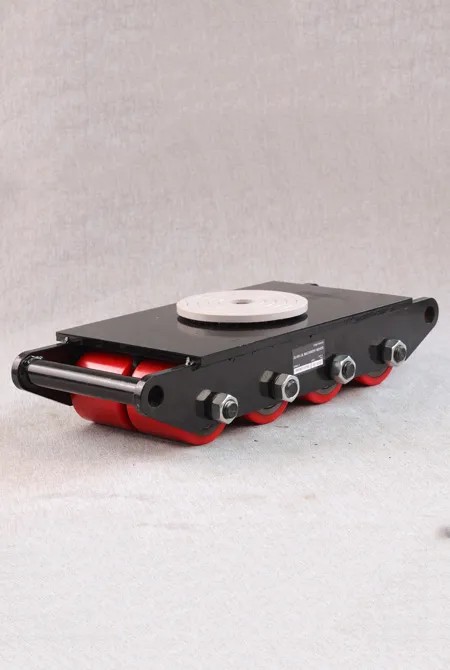rail mounted crane
The Importance of Rail Mounted Cranes in Modern Industry
Rail mounted cranes are critical tools in modern industrial operations, known for their efficiency and superior loading capabilities. Unlike traditional cranes that operate on wheels or are stationary, rail mounted cranes are designed to move along fixed tracks. This unique feature provides them with enhanced stability and allows them to cover greater distances within large facilities such as warehouses, docks, and manufacturing plants.
Structure and Functionality
Rail mounted cranes typically consist of a sturdy frame that rolls on rails, a hoisting mechanism, and additional components such as a trolley for lateral movement. Their construction is robust, often made of steel, which enables them to support heavy loads. The operational principle of these cranes revolves around the seamless interaction between the rail system and the crane’s drive mechanism, ensuring that the load can be moved smoothly from one point to another.
One of the key advantages of rail mounted cranes is their ability to handle substantial weights, making them ideal for heavy-duty applications. They are commonly employed in shipyards for loading and unloading cargo, and in manufacturing where large components must be moved safely and efficiently. The combination of mobility and high lifting capacity ensures that businesses can optimize their workflow, minimizing downtime and enhancing productivity.
Applications Across Industries
Rail mounted cranes cater to a wide array of industries. In the construction sector, they are essential for transporting heavy materials from one site to another. Their ability to navigate fixed paths allows for predictable and reliable operations, which is crucial when working on large projects with stringent schedules.
In the logistics sector, rail mounted cranes facilitate the efficient movement of goods within shipping yards and warehouses. They can manage bulk materials such as containers, steel beams, and heavy machinery, which would be difficult to transport with conventional cranes. This efficiency translates into reduced operational costs and increased throughput, vital metrics for any logistics operation.
The manufacturing industry also benefits significantly from the deployment of rail mounted cranes. They streamline assembly lines by moving parts and materials where they are needed, reducing the need for manual labor and thus decreasing the likelihood of workplace injuries. This automation aspect is key in enhancing safety standards while simultaneously increasing production efficiency.
rail mounted crane

Advantages Over Other Crane Types
One of the standout benefits of rail mounted cranes is their stability. As they are mounted on rails, they exhibit lower risks of tipping over compared to mobile cranes, especially when handling heavy loads. This stability is further enhanced by the design of the crane, which typically features a lower center of gravity.
Moreover, rail mounted cranes require less maintenance in terms of mobility. Their fixed path eliminates the wear and tear associated with wheel rotations on asphalt or concrete surfaces. This durability and reduced maintenance frequency contribute to long-term cost savings for companies that rely on these machines.
Future Innovations
As industries evolve, so too do the technologies that support them. The future of rail mounted cranes looks promising, with advancements in automation, remote control, and integration with smart factory systems. The incorporation of sensors and IoT technology will enhance safety protocols, allowing for real-time monitoring of loads and automatic adjustments in response to changing conditions.
Additionally, as sustainability becomes increasingly crucial, manufacturers are looking at energy-efficient designs that reduce the environmental impact of crane operations. Electric-powered rail mounted cranes are being developed to minimize carbon footprints, providing a greener alternative without compromising on performance.
Conclusion
In conclusion, rail mounted cranes play a pivotal role in the efficiency and operation of modern industries. Their unique design caters to the transportation of heavy loads across extensive distances while ensuring stability and safety. As technology continues to evolve, these cranes are set to become even more integral to industrial operations, bringing the promise of increased efficiency, reduced costs, and enhanced safety standards. With their ability to adapt to a wide range of applications, rail mounted cranes will undoubtedly remain a cornerstone of heavy lifting and material handling for years to come.
-
The Ultimate Guide to Heavy Machinery Moving EquipmentNewsAug.04,2025
-
The Evolution of Large Equipment MoversNewsAug.04,2025
-
Maximizing Efficiency with PML Magnetic Lifters in Industrial OperationsNewsAug.04,2025
-
Choosing the Best Small Gantry CraneNewsAug.04,2025
-
Innovations in Permanent Lifting Magnet TechnologyNewsAug.04,2025
-
How to Maintain Your Adjustable Gantry Crane for LongevityNewsAug.04,2025
-
PML 6 Lifting Magnet Troubleshooting GuideNewsJul.25,2025
